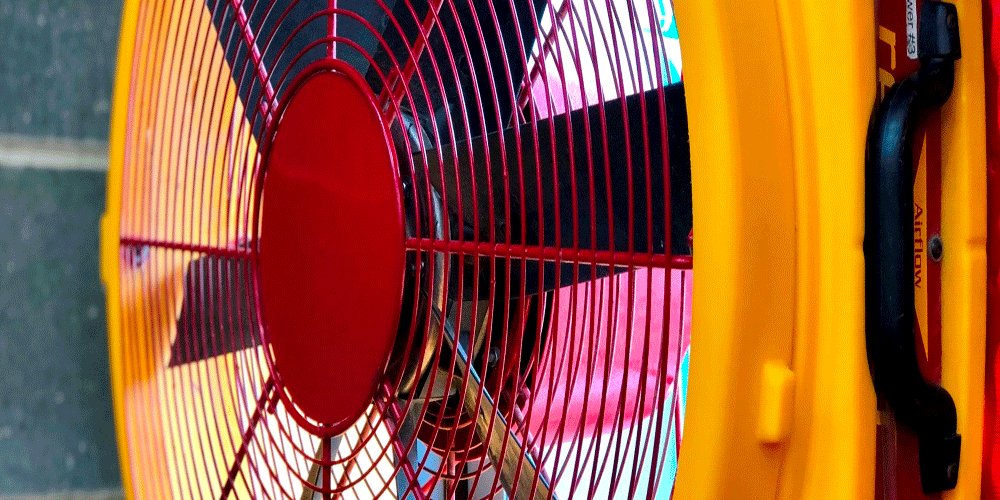Have you ever stopped to think about the quality of the air you breathe indoors? Most of us spend a significant amount of time inside our homes, workplaces, and other indoor environments. However, the air we inhale indoors can sometimes be more polluted than the outdoor air. That’s why it’s crucial to consider the quality of indoor air and take steps to ensure its cleanliness. One effective way to assess and improve indoor air quality is through testing.
Indoor air quality testing is a process of evaluating and measuring various pollutants and contaminants present in the air inside buildings. These pollutants can originate from numerous sources, including building materials, cleaning products, furniture, cooking, smoking, and outdoor air pollutants that infiltrate indoors. Testing helps identify the types and levels of pollutants, enabling us to take appropriate actions to improve the air we breathe.
So, why is indoor air quality testing so important? Let’s explore some key reasons:
1️⃣ Health and Well-being: The quality of the air we breathe indoors directly impacts our health and well-being. Poor indoor air quality can lead to various respiratory problems, allergies, headaches, fatigue, and even more severe conditions. Testing helps identify potential pollutants and enables us to mitigate their effects, ensuring a healthier living and working environment.
2️⃣ Productivity and Performance: Indoor air quality can significantly affect productivity and performance, especially in workplaces. Studies have shown that exposure to poor indoor air quality can decrease cognitive function, impair decision-making, and reduce overall productivity. By testing and improving air quality, employers can create a healthier and more conducive environment for their employees, ultimately enhancing performance.
3️⃣ Allergens and Asthma Triggers: Indoor air can harbor allergens such as dust mites, pollen, pet dander, and mold spores. These can cause allergies and trigger asthma attacks, especially in individuals with sensitivities. Testing helps identify specific allergens present, allowing for targeted measures to reduce their presence and minimise allergic reactions.
4️⃣ VOCs and Chemical Contaminants: Volatile Organic Compounds (VOCs) are emitted from various sources like paints, adhesives, cleaning products, and furniture. Prolonged exposure to high levels of VOCs can lead to respiratory issues, headaches, and long-term health effects. Testing for VOCs helps identify potential sources and allows for informed decisions regarding the use of low-emitting products.
5️⃣ Compliance and Regulations: In some cases, indoor air quality testing is necessary to comply with regulations and standards. Certain industries, such as healthcare, manufacturing, and hospitality, have specific guidelines in place to ensure a safe and healthy environment for occupants. Regular testing ensures adherence to these standards and helps avoid legal and financial consequences.
Consulting the Professionals
To carry out indoor air quality testing, it’s advisable to consult professionals experienced in this field. Companies such as APT Sound Testing will employ various methods to measure and analyse air samples, including physical inspections, pollutant-specific tests, and assessing ventilation systems.
Based on the findings, they can provide recommendations to address any identified issues, such as improving ventilation, implementing air filtration systems, or adopting better maintenance practices.
When it comes to indoor air quality testing, there are a few more aspects worth considering. These factors can provide a more comprehensive understanding of the air quality in your indoor environment and help you take appropriate actions.
1️⃣ Radon Testing: Radon is a colorless, odorless, and tasteless gas that can seep into buildings through the ground. Prolonged exposure to high levels of radon can increase the risk of lung cancer. Conducting radon testing is crucial, especially in areas where radon is known to be prevalent. Professional radon testing kits or specialised contractors can assess the radon levels in your home or workplace and suggest mitigation strategies if necessary.
2️⃣ Moisture and Mold Testing: Excessive moisture and the presence of mold can significantly impact indoor air quality. Mold growth can lead to respiratory issues, allergic reactions, and other health problems. Testing for moisture levels and mold spores can help identify areas of concern and guide remediation efforts. Addressing moisture sources, improving ventilation, and conducting mold remediation can help maintain a mold-free environment.
3️⃣ Particulate Matter Testing: Particulate matter (PM) consists of tiny particles suspended in the air, such as dust, pollen, and soot. These particles can be harmful, particularly when they are fine enough to be inhaled into the respiratory system. Testing for PM levels provides insights into the presence of these particles and their potential health risks. It can guide the use of air purifiers, filtration systems, and regular cleaning practices to reduce PM concentrations.
4️⃣ Carbon Monoxide Testing: Carbon monoxide (CO) is a toxic gas produced by incomplete combustion of fuels like gas, oil, and wood. High levels of CO can be life-threatening, causing symptoms such as dissiness, nausea, and even death. Installing carbon monoxide detectors and regularly testing for CO levels is essential to safeguard against this silent but deadly gas.
5️⃣ Personal Habits and Activities: While professional testing is valuable, it’s also important to consider personal habits and activities that may impact indoor air quality. For instance, smoking indoors, using certain cleaning products, or engaging in hobbies that generate fumes can introduce pollutants into the air. Being mindful of these activities and adopting healthier alternatives can contribute to better indoor air quality.
By taking a comprehensive approach to indoor air quality testing, considering factors such as radon, moisture, mold, particulate matter, and carbon monoxide, along with personal habits and activities, you can ensure a more thorough assessment of your indoor environment. This knowledge empowers you to make informed decisions and implement appropriate measures to improve air quality and promote a healthier living or working space.
Remember, maintaining good indoor air quality is an ongoing effort. Regular testing, combined with preventive measures like proper ventilation, regular cleaning, and the use of low-emitting products, can significantly contribute to a cleaner and safer indoor environment. Prioritising indoor air quality benefits not only your health but also the well-being and comfort of everyone who shares the space.
